A Whirling Web of Art Deco Pattern on Flatbush Avenue
Seen from a distance, this building may look like a rather ordinary commercial building but the upper story is a swirl of abstract Art Deco leaves and flowers.

Seen from a distance, this building may look like a rather ordinary commercial building on Flatbush. Get closer and look up and you can see that the upper story is a complex web of abstract Art Deco design.
Built in 1929, 816-818 Flatbush Avenue sits at the corner of Caton Avenue, one of the many commercial buildings along the busy avenue. As Brownstoner’s Suzanne Spellen wrote, Flatbush was a flourishing middle class neighborhood in the 1930s, with Flatbush Avenue the prime commercial strip. There was some pulling down of the old and raising of the new during this period as modern structures took the place of some of the late 19th and early 20th century buildings.
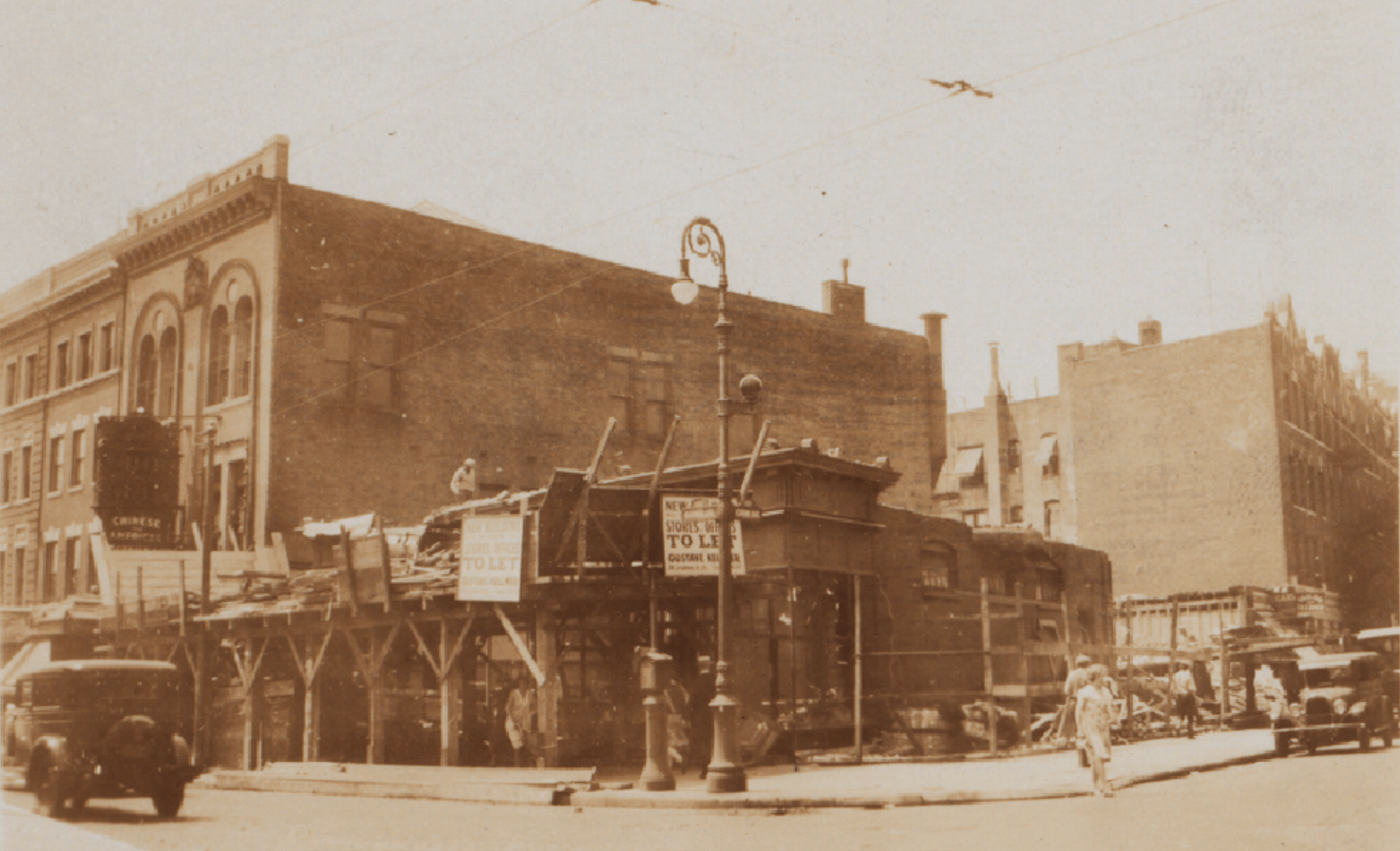
A photograph of this corner in 1929 shows a brick building with an ornate storefront coming down in preparation for new construction. Signs on the outside boast of the new building coming with stores and offices to let.
The old building had been owned and operated by the James Butler Grocery Co, but in 1929 they auctioned off a chunk of their real estate holdings. Seven properties in Brooklyn were on the auction block, including the building listed as 816 Flatbush Avenue/2128 Caton Avenue. According to the Brooklyn Daily Eagle, there was “intense interest” at the April auction held at the Hotel Commodore in Manhattan, with the property selling to the Flatbush Improvement Company for $250,000. The Eagle reported the new owners planned to demolish the existing three-story brick building and build a two-story commercial structure.
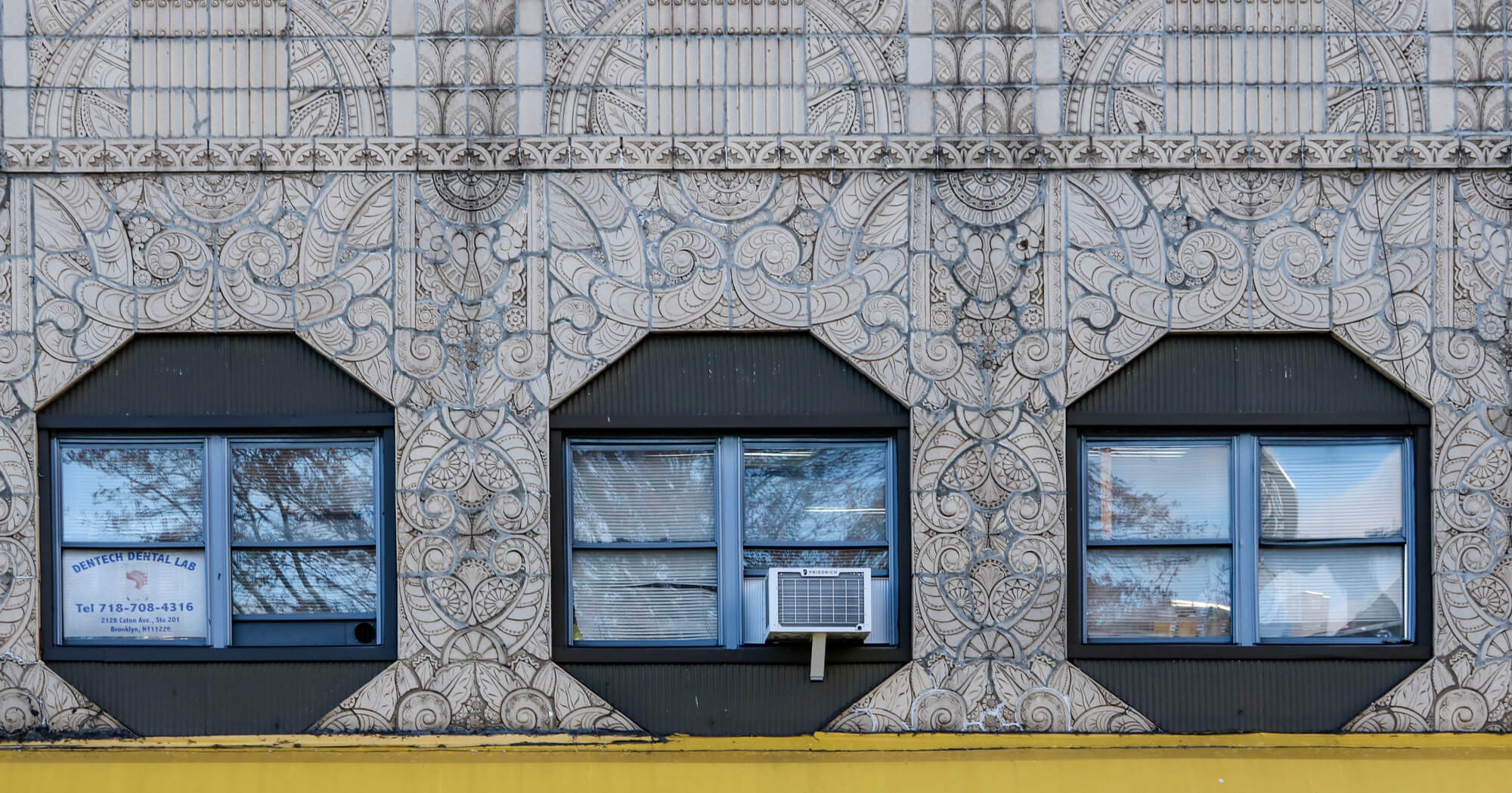
Plans for the new building were already under way in June when the Brooklyn Daily Eagle reported the commercial structure would cost the Flatbush Improvement Corporation $45,000 to build. The architect responsible for the new building was Brooklyn-based Boris W. Dorfman. By December of 1929, the building was complete, with stores on the first floor and offices above, and had its certificate of occupancy.
Architect Dorfman was versed in the new modern style; in 1927 his Mediterranean influenced Deco building at 99 Ocean Avenue, was completed. Born in Russia, Dorfman arrived in the U.S. in 1903 at the age of 21. By 1913 he had set up his own architectural practice. He was busy in the late 1920s, with numerous apartment building projects reported on in the pages of the Brooklyn Daily Eagle.
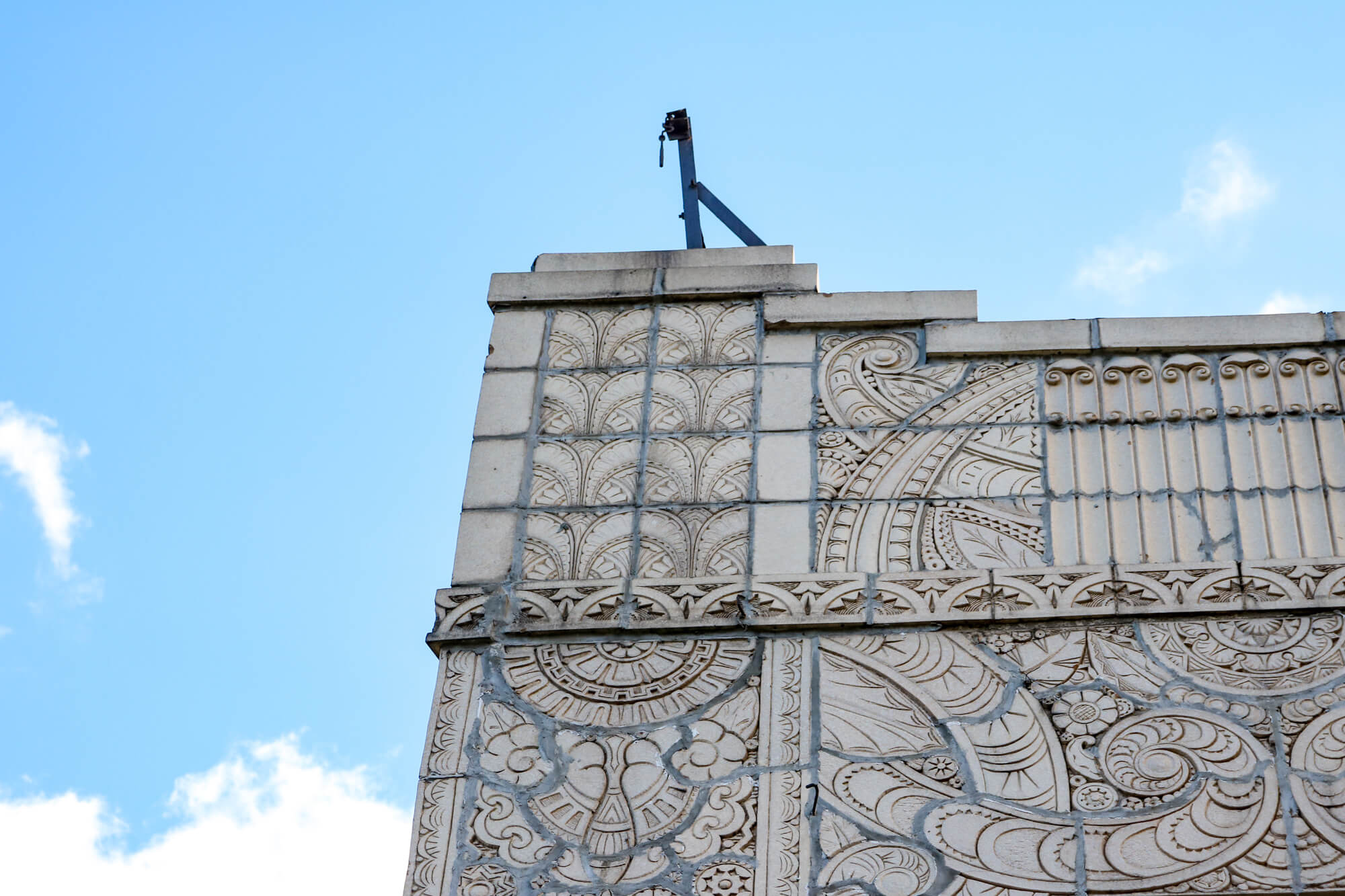
This Flatbush Avenue commercial building is much smaller in scale than his Ocean Avenue apartment, but it packs in a lot of ornamentation. There’s no polychrome terra-cotta here; the complex, incised ornament is rendered in buff colored terra-cotta. There are abstract swirls of leaves, flowers and geometric patterns, all contained within panels separated by octagonal windows and topped with an equally ornate parapet.
Some of the ornamentation is hidden by modern awnings and the windows have been altered, but the full glory of the building is visible in the circa 1940 tax photo. At the time, the building was occupied by a Flora Mir Candy Company shop, a liquor store, florist and other shops on the ground floor, with professional offices, such as a chiropodist, above.
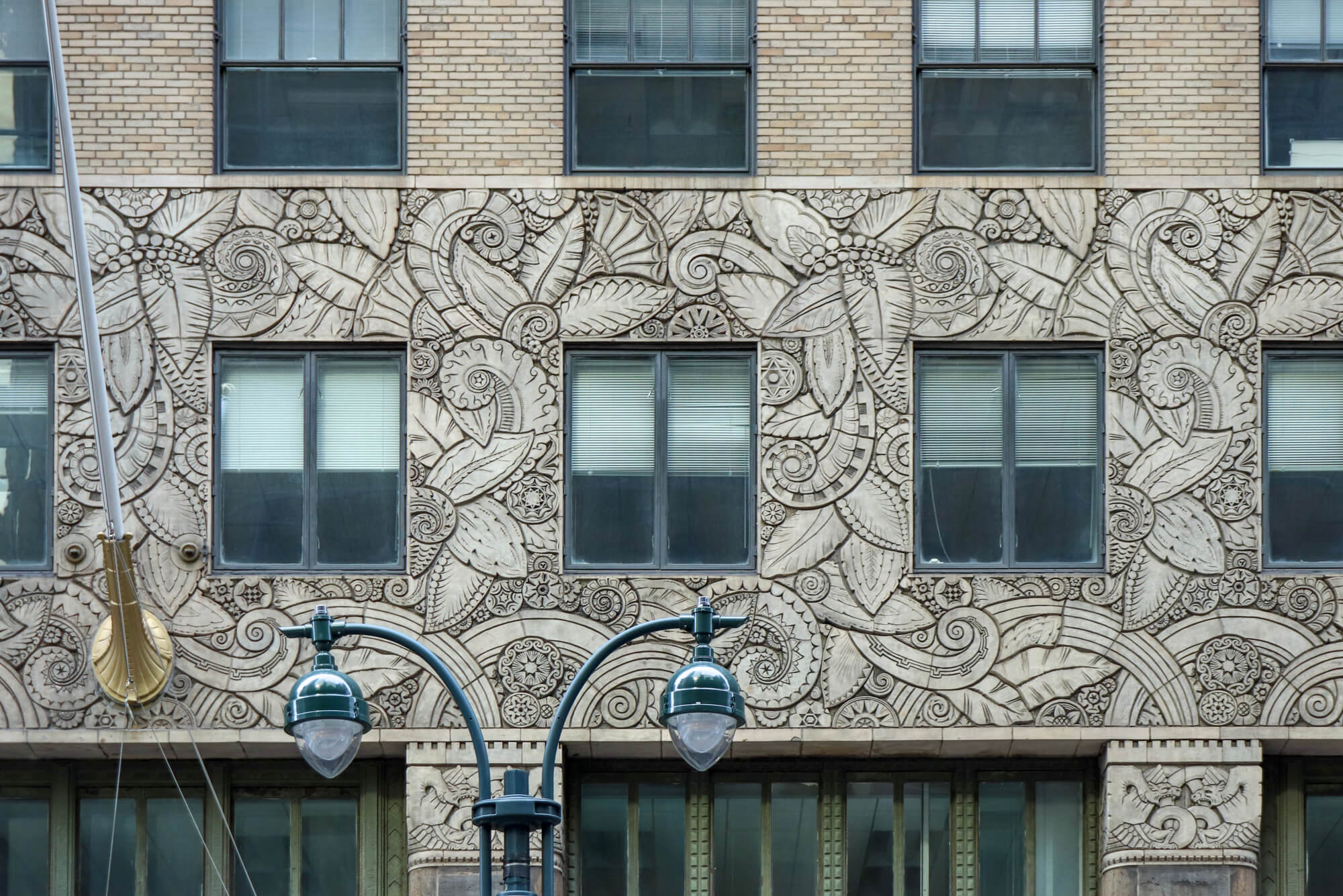
For architecture enthusiasts, the terra-cotta ornament may bring to mind the Chanin Building at 122 East 42nd Street in Manhattan. Also completed in 1929, the building design was by Sloan & Robertson but the terra cotta ornamentation on the facade was by sculptor Rene Chambellan in consort with Jacques Delmarre of the Chanin Construction Company.
The scale of the Chanin Building, at 56 stories, is of course wildly different than the modest Flatbush structure, but the use of the incised panels as a band of ornament with inset windows is somewhat similar. In a review of the Chanin Building in a May 1929 issue of Architectural Forum, a critic described the band of ornament on the floors just above street level as an “all over pattern of modeled terra cotta” and disagreed with those who “feel this pattern is out of scale.”
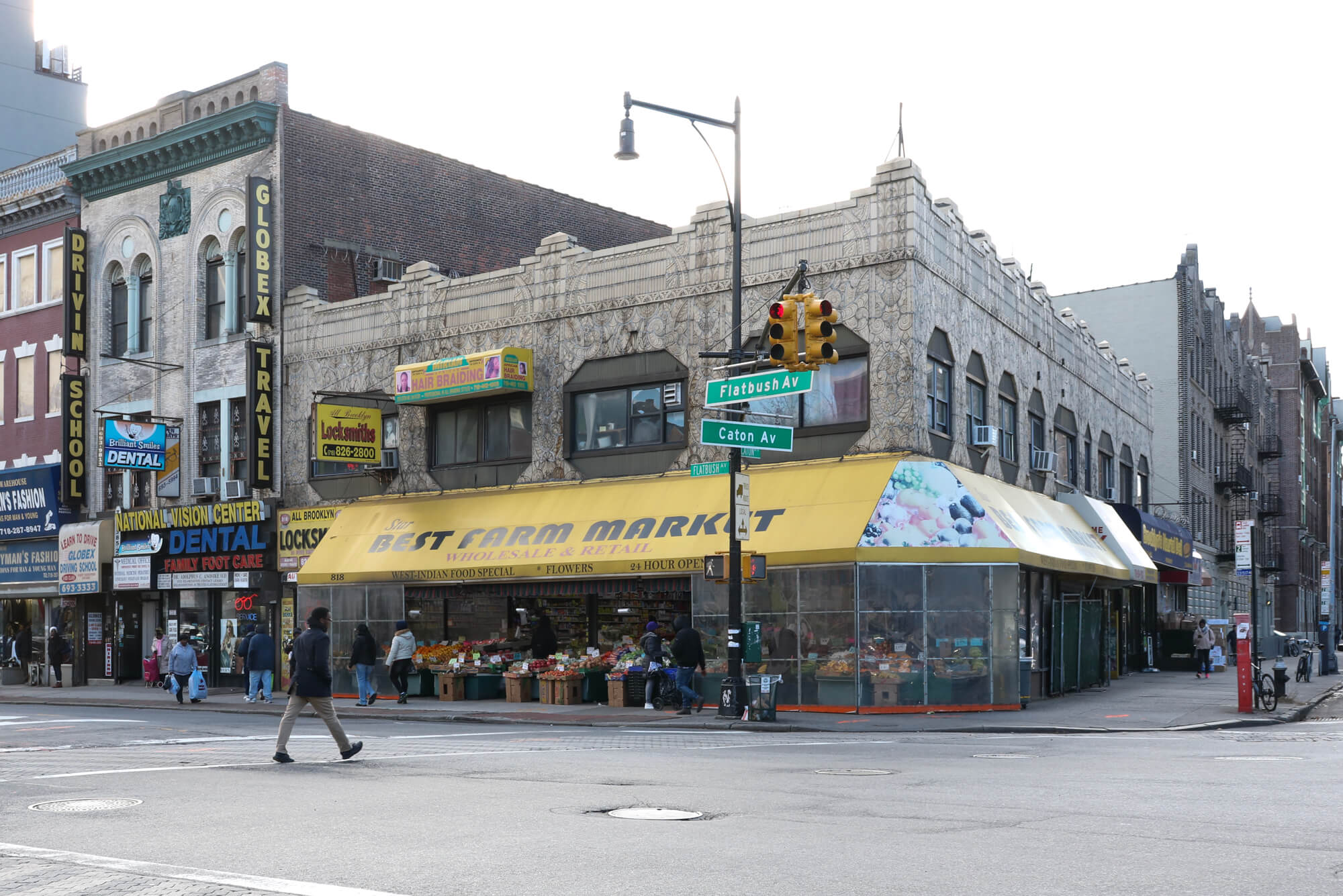
While similarly rendered, the scale and the exact details of the swirls and abstract flowers and leaves are distinct in each building. The terra-cotta on the Chanin Building was produced by the Atlantic Terra Cotta Company, one of the many terra-cotta firms operating in and around New York. In Brooklyn the company is known as having supplied terra cotta to a number of buildings, including the Brooklyn Academy of Music and the Brooklyn Masonic Temple.
Where Dorfman obtained the terra-cotta for 816-818 Flatbush Avenue is still unknown and so far a look at his other Brooklyn designs hasn’t turned up a similar use of terra-cotta ornament. Meanwhile, the delightfully ornate little building continues to provide space for small businesses much as it has since 1929.
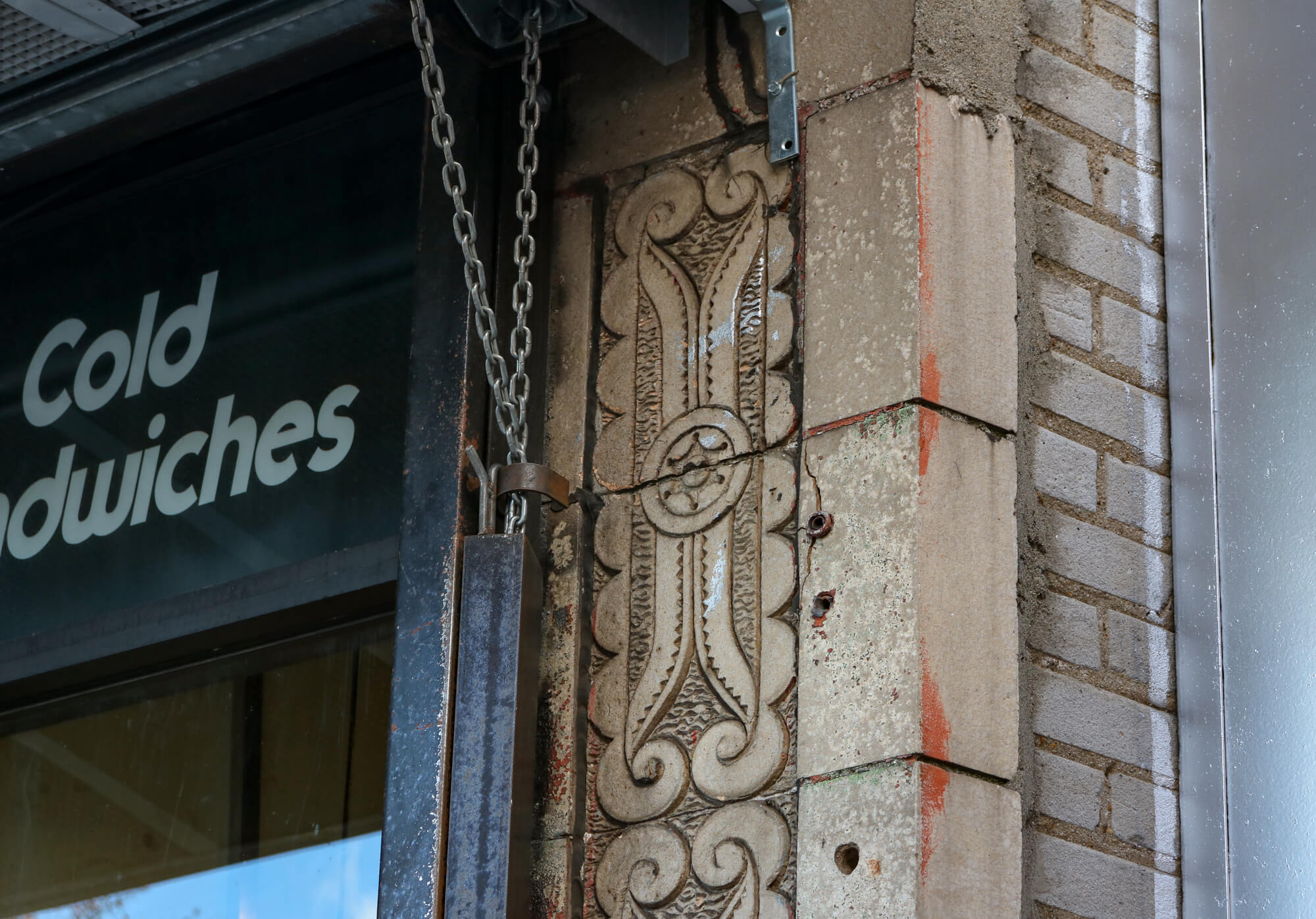
[Photos by Susan De Vries unless otherwise noted]
Related Stories
- Look Out for This Eye-Catching Terra-Cotta Art Deco Doorway in Bed Stuy
- Mediterranean Deco Apartments With Extra Ornamental Zing Stand Out on Ocean Avenue
- Robert Fulton Is Watching You From Flatbush Avenue
Email tips@brownstoner.com with further comments, questions or tips. Follow Brownstoner on Twitter and Instagram, and like us on Facebook.





What's Your Take? Leave a Comment